Torsades de pointes ekg examples: Difference between revisions
No edit summary |
No edit summary |
||
| Line 2: | Line 2: | ||
{{CMG}} | {{CMG}} | ||
'''For the main page on torsades de pointes, click [[ | '''For the main page on torsades de pointes, click [[Torsades de pointes|here]].''' | ||
==EKG Examples== | ==EKG Examples== | ||
| Line 38: | Line 38: | ||
---- | ---- | ||
Shown below is an EKG depicting | Shown below is an EKG depicting [[arrhythmia]]s in a patient with short coupled torsade de pointes<ref name="Leenhardt"> Leenhardt A, Glaser E, Burguera M, Nuernberg M, Maison-Blanche P, and Coumel P. Short-coupled variant of torsade de pointes. A new electrocardiographic entity in the spectrum of idiopathic ventricular tachyarrhythmias. Circulation 1994 Jan; 89(1) 206-15. PMID 8281648 </ref> | ||
[[image:shortcoupled_tdp1.jpg|center|800px]] | [[image:shortcoupled_tdp1.jpg|center|800px]] | ||
Latest revision as of 15:06, 24 October 2012
Editor-In-Chief: C. Michael Gibson, M.S., M.D. [1]
For the main page on torsades de pointes, click here.
EKG Examples
Shown below is an EKG with wide QRS complexes that appear to twist around the isoelectric axis, suggesting torsades de pointes.

Copyleft image obtained courtesy of ECGpedia, http://en.ecgpedia.org
Shown below is an EKG with wide QRS complexes that appear to twist around the isoelectric axis indicating torsades de pointes.

Copyleft image obtained courtesy of ECGpedia, http://en.ecgpedia.org
Shown below is an EKG depicting polymorphic ventricular tachycardia, with complexes that appear to twist around the isoelectric axis, indicating torsades de pointes.

Copyleft image obtained courtesy of ECGpedia, http://en.ecgpedia.org
Shown below is an EKG depicting torsades de pointes.

Copyleft image obtained courtesy of ECGpedia, http://en.ecgpedia.org
Shown below is an EKG depicting arrhythmias in a patient with short coupled torsade de pointes[1]
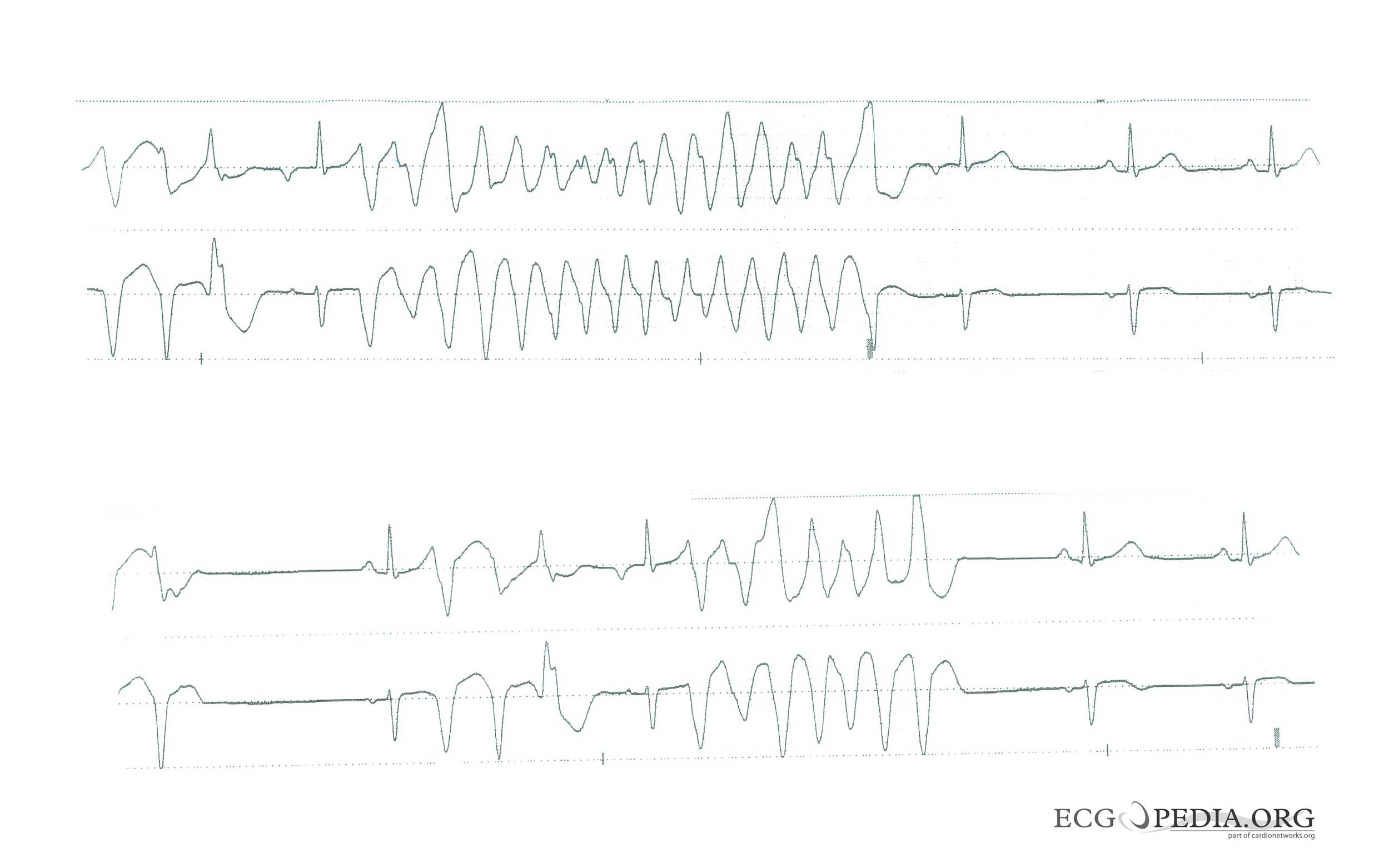
Copyleft image obtained courtesy of ECGpedia, http://en.ecgpedia.org
Shown below is an EKG depicting arrhythmias in a patient with short coupled torsades de pointes degenerating in ventricular fibrillation[1]
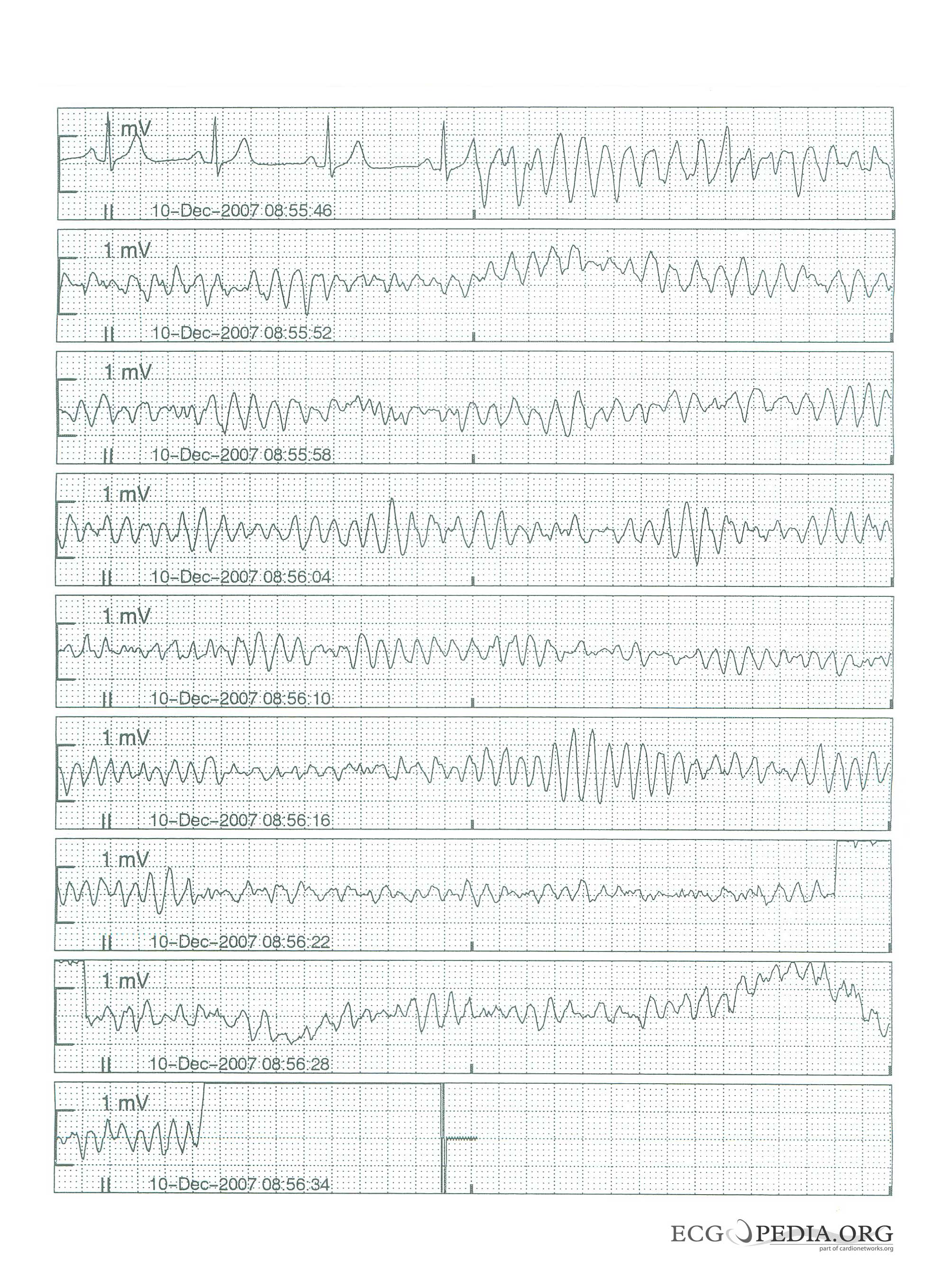
Copyleft image obtained courtesy of ECGpedia, http://en.ecgpedia.org
Shown below is an EKG depicting arrhythmias in a patient with short coupled torsade de pointes: frequent short coupled extrasystoles[1]
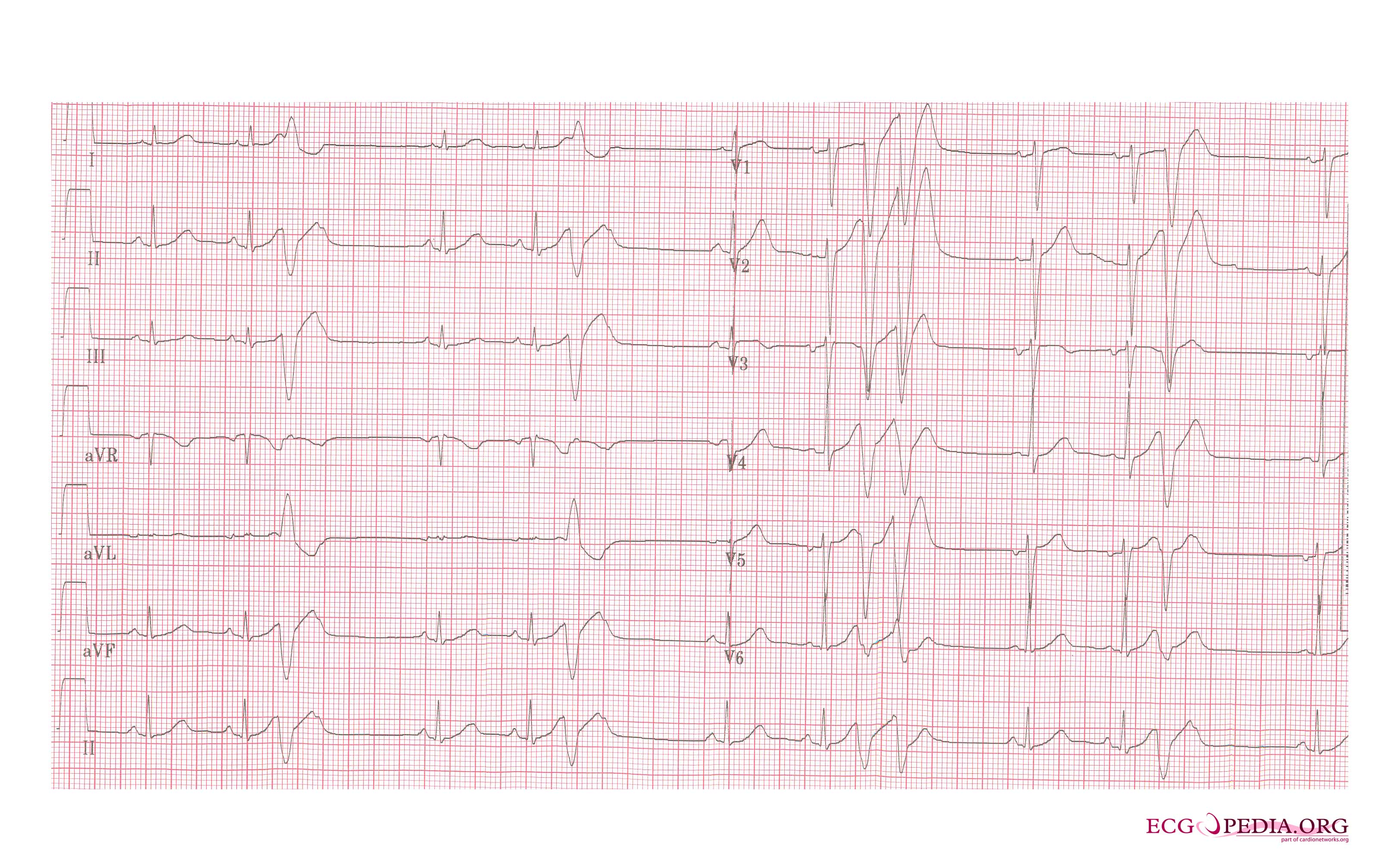
Copyleft image obtained courtesy of ECGpedia, http://en.ecgpedia.org
Shown below is an EKG depicting arrhythmias in a patient with short coupled torsade de pointes: frequent short coupled extrasystoles [1]
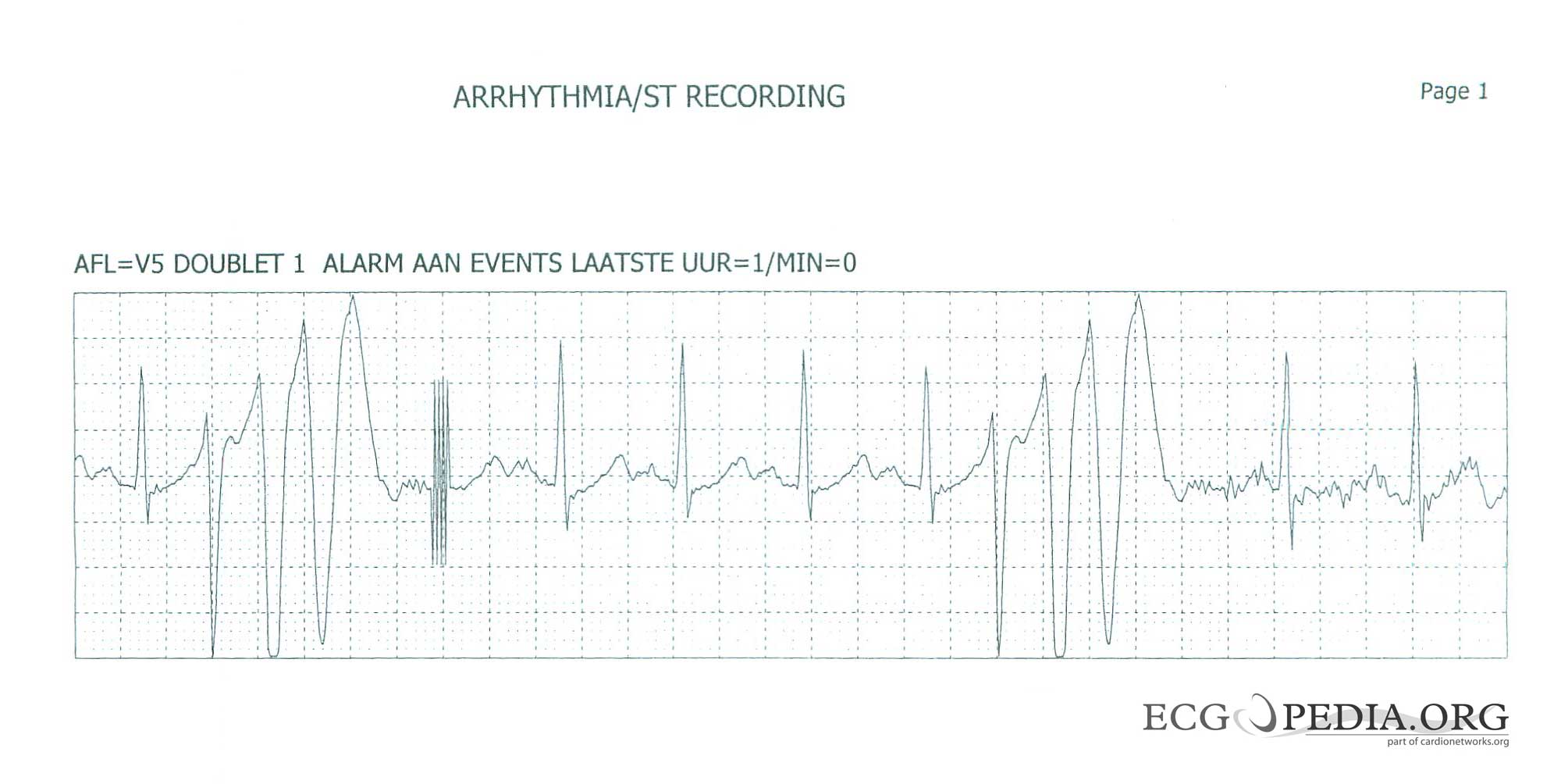
Copyleft image obtained courtesy of ECGpedia, http://en.ecgpedia.org
Shown below is an EKG depicting torsades de pointes[2]
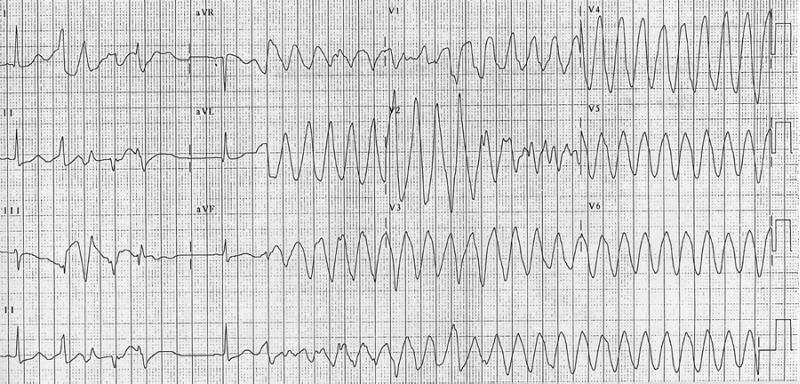
Copyleft image obtained courtesy of ECGpedia, http://en.ecgpedia.org
Shown below is an EKG with a tracing to help show the twisting (blue line) pattern of complexes seen in torsade de pointes.

Copyleft image obtained courtesy of Dr. C. Michael Gibson, MD.
References
- ↑ 1.0 1.1 1.2 1.3 Leenhardt A, Glaser E, Burguera M, Nuernberg M, Maison-Blanche P, and Coumel P. Short-coupled variant of torsade de pointes. A new electrocardiographic entity in the spectrum of idiopathic ventricular tachyarrhythmias. Circulation 1994 Jan; 89(1) 206-15. PMID 8281648
- ↑ Khan IA. Twelve-lead electrocardiogram of torsade de pointes Tex Heart Inst J. 2001; 28 (1): 69. PMID 11330748